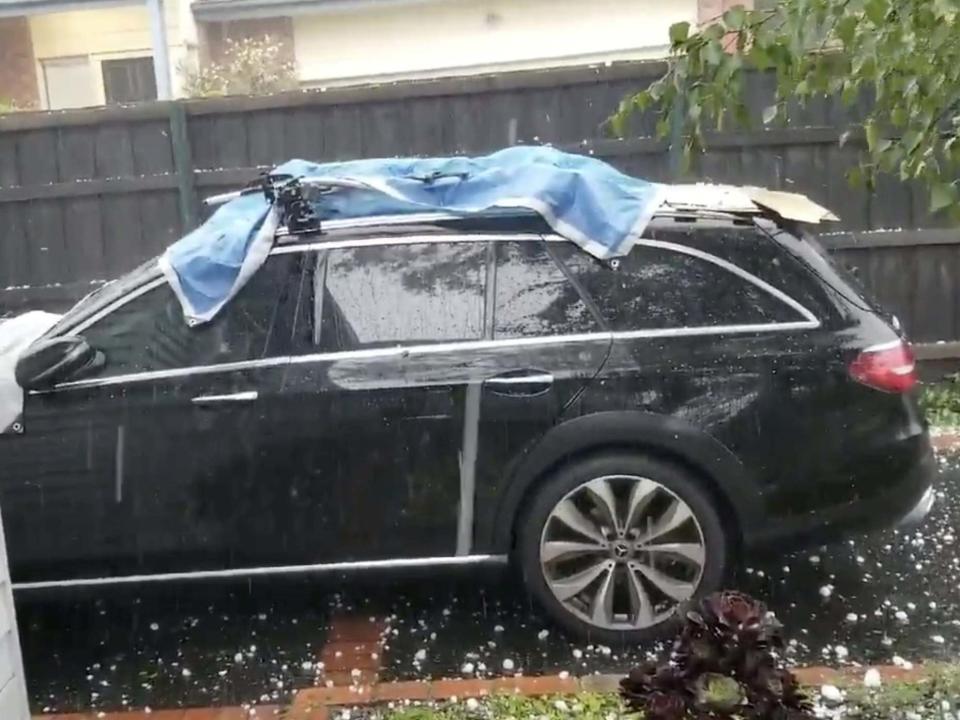Australia weather: Melbourne battered by golf ball-sized hail as extreme conditions persist

Golf ball-sized hailstones fell from the sky and dust storms blocked out the sun as extreme weather swept southern Australia over the weekend.
Shoppers were forced to leave a Woolworths store in Melbourne on Sunday afternoon after sections of the ceiling gave way in the wake of a storm that has battered the state of Victoria.
Locals reported hailstones up to 5cm in diameter in the suburb of Glen Iris, while areas in the region of East Gippsland and Victoria’s northeast were put on flood watch, according to ABC News.
Krystian Seibert, a resident of Hawthorn, Melbourne, told the local Herald Sun newspaper that the hail “sounded like a pinball machine”.
“I’ve lived in Melbourne for a long time and I’ve never seen or experienced something like this,” he told the newspaper.
Outdoor shelters were battered by the hail and some vehicles were reportedly left with shattered windscreens.
Meanwhile residents posted videos of massive dust clouds descending on their homes in central New South Wales.
On Monday morning the state’s Bureau of Meterology issued a severe thunderstorm warning for “damaging winds, large hailstorms and heavy rainfall that may lead to flash flooding”.
A severe weather warning for heavy rain was also issued for central and eastern parts of Victoria on Monday.
“We’re going to see some potentially flash flooding and severe thunderstorms over the next couple of days, including [in] some damaged fire areas,” Lisa Neville, Australia’s minister for police and emergency services, said.
The heavy hail was a sharp contrast to the extreme hot weather that has led to some of the worst bushfires in Australia’s history in recent months.
At least 28 people have been killed during the wildfire crisis, which has devastated large sections of the country.
We might struggle to get a start immediately after tea. @WarrandyteCC pic.twitter.com/7DP7ZbWa8D
— Adam White (@White_Adam)
More than 2,500 homes have been destroyed and a swathe of land almost one-third of the size of Germany has been burnt.
It is also estimated that one billion animals have died in the blazes.
Earlier in January, the Bureau of Meteorology said 2019 had been Australia’s hottest year on record with the average temperature across the country reaching 1.5C above the long-term average.
Read more
Smoke from Australia wildfires ‘to make full circuit’ around globe

